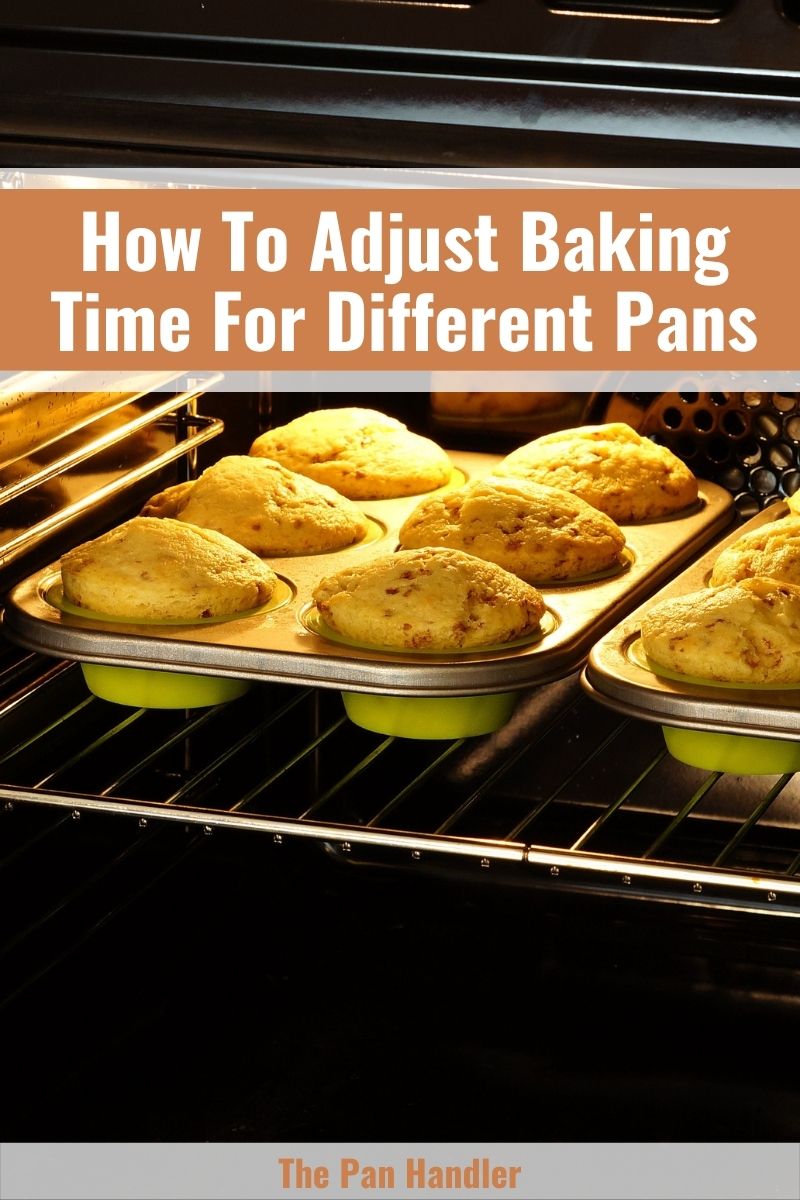Baking is all about accuracy. You need to prepare the right ingredients with the correct measurements and, of course, the right baking time; otherwise, you will not achieve the result you are expecting. Knowing how to adjust baking time for different size pans is essential. This way, even if you change the pan size, you can still achieve the expected results.
The Basics of Baking
Baking is a constant learning experience, and it relies heavily on understanding the baking basics. This includes the ingredients and the processes involved. You need to understand their relationship, how they work together, their effects on each other, and how they react to specific processes.
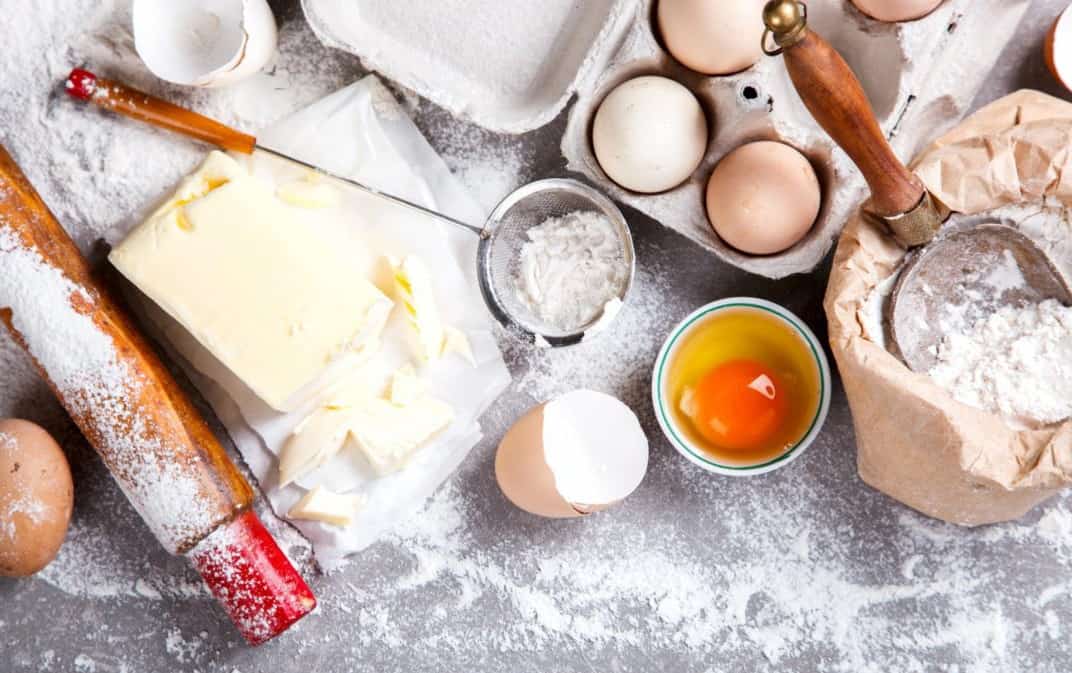
Accuracy
Any baking recipe existing out there requires accuracy. While almost every baked good is composed and made of repeating key ingredients, differences in measurements or ratios are mostly what differentiates most recipes.
If your goal is to achieve a consistent product, exactly as noted in the recipe, you have to follow through with accuracy. Making minor or significant changes to the recipe affects the finished product. Thus, measuring ingredients is very important.
Ingredients
Before starting anything, it would be nice to have all the ingredients prepared beforehand. The usual ingredients you would need are flour, water, leaveners (like eggs, yeast, baking powder, baking soda, etc.), salt, dairy, sugar, and the like.
Tools and equipment
In baking, it’s necessary to have the right tools and equipment. This ensures that the processes align with the recipe’s requirements, meeting your expectations. You won’t need a cupboard filled with expensive special equipment, even simple tools and equipment would be enough. Here are some of the essential baking tools to take note of.
- Baking pans, trays, tins
- Scraper (specifically for baking)
- Mixer
- Tubs and bags
- Oven
Temperature
Temperature is also an essential factor to control when it comes to baking. Some ingredients change their properties depending on the temperature, like fats. For other ingredients, it’s important to ensure they are brought to the desired temperature before adding them and proceeding with the next step.
Eggs, for example, need to be tempered before pouring them into the custard. Another thing to take into account is ingredients that are usually cold. You must bring them to room temperature before starting any process.
Adjusting Temperature and Baking Time
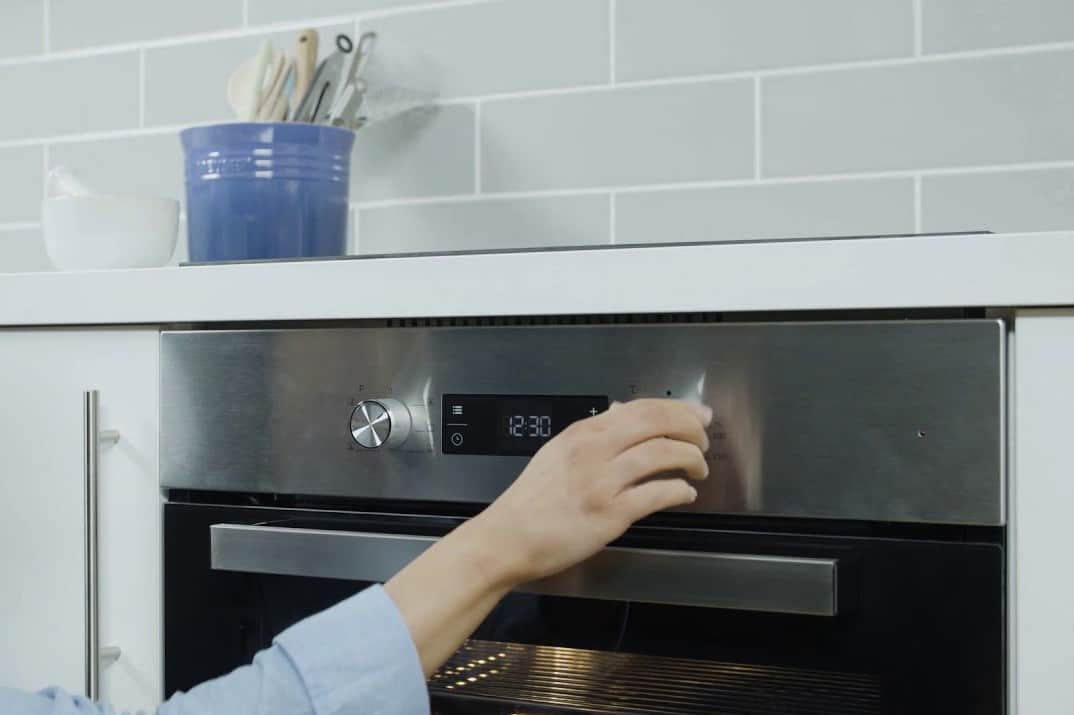
When it’s your beginner moment in baking, it’s normal to have many questions in mind, especially when it comes to measurements and time. “How long do I cook this recipe when I do not have this pan size?”, “Do I search for another recipe?” And so on, you can have pretty much a list of questions you can get from a single difference in size.
As baking emphasizes accuracy, slight adjustments will be quite the scare for newbies. It can be challenging to learn about adjustments independently, so it’s always good to do your research.
General Rule
In baking, there’s a general rule you can follow whenever you need to adjust the time for baking. Situations that call for this general rule usually involve having a pan of different sizes from the pan indicated in the recipe.
The general rule is: “As the pan size increases, you should lower the temperature and increase the baking time.” For example, if you are baking a cake in a 9” pan, at 350 F., you would need to bake it for approximately 30 to 35 minutes.
On the other hand, when you are cooking the same recipe but this time, using a larger pan, let’s say, a 14” pan, you will need to bring down the temperature to 325 F while increasing the baking time to approximately 50 to 55 minutes.
Note the area of the pan
The pan area is also a critical point in figuring out and adjusting the temperature and time for baking. Baking the same amount of batter in an increased area will result in a shallower batter.
A shallow batter will allow heat to access and cook the center quicker. Because of this, it’s recommended to decrease the baking time. At the same time, you would need to increase the temperature to still achieve your desired browning, given the shorter time.
On the other hand, when you use a deeper pan than the one mentioned in the recipe, you would need to increase the baking time and possibly lower the temperature to ensure even cooking without burning the outside.
Thus, you would need to decrease the baking time while lowering the temperature to avoid burning the outside and undercooking the center. This way, the center is cooked, and nothing is burned.
Things To Note In Adjusting Temperature and Time
There are conditions when undergoing adjustment in time and temperature. The first and usual condition is when the pan size is not the same as the one required in the recipe.
Formulas
You can follow the usual formulas to calculate how much time and temperature you need to adjust. First things first, the depth of the batter is a crucial point to note. To figure out how much more profound is the change in depth using another pan size, you need to divide the original pan size by the new or the available pan.
Divide it into square inches to make it easier. For example, the recipe indicates a 64 square inch bottom, but you only have a pan that’s 45 square inches. 64 divided by 45 is equal to 1.4. Thus, the batter will be almost 1-½ times as deep. You would need to increase the time and lower the temperature, given the rule of thumb.
Trial and error
Using the situation above, you would have to go by trial and error this time. Trial and error will require effort and the use of your baking sense. First, lower the temperature by 25 degrees and test its doneness according to the recipe.
Add ten percent of the original baking time to the batch with different pan sizes and check on the product’s doneness. While it typically takes 25 percent more time, it’s strategic to check it every 10 percent to make sure you are not burning your baked good.
Conversion chart
There is a way to improve your trial and error process. This method is to provide yourself with a conversion chart. This way, you don’t “roughly” estimate, but instead, you are much more precise when it comes to the pan size changes.
Shapes play a significant role in baking. For example, an 8-inch square pan has a similar area to a 9-inch round pan. You can swap the pans with ease and no calculations, trial, and error in these situations.
Dimension(in) | Area (sq-in) | Volume (cups) |
Round | ||
6 x 2 | 28 | 4 |
8 x 2 | 50 | 6 |
9 x 2 | 9 x 2 | 8 |
10 x 2 | 79 | 11 |
Square & Rectangular | ||
8 x 8 x 2 | 64 | 8 |
9 x 9 x 2 | 81 | 10 |
10 x 10 x 2 | 100 | 12 |
11 x 7 x 2 | 77 | 10 |
9 x 13 x 2 | 117 | 14 |
Loaf | ||
8 x 4 x 2½ | 32 | 4 |
8½ x 4½ x 2½ | 38 | 6 |
9 x 5 x 3 | 45 | 8 |
Springform | ||
8 x 3 | 50 | 9 |
9 x 3 | 64 | 12 |
Half-Sheet | ||
12 x 16 x 1 | 192 | 192 |
Bundt | ||
8 x 4 | 9 | |
10 x 3½ | 12 | |
Angel Food Tube | ||
8 x 3 | 9 | |
9½ x 4¼ | 17 | |
9¾ x 4¼ | 19 |
Tips and Non-negotiables In Adjusting Recipes
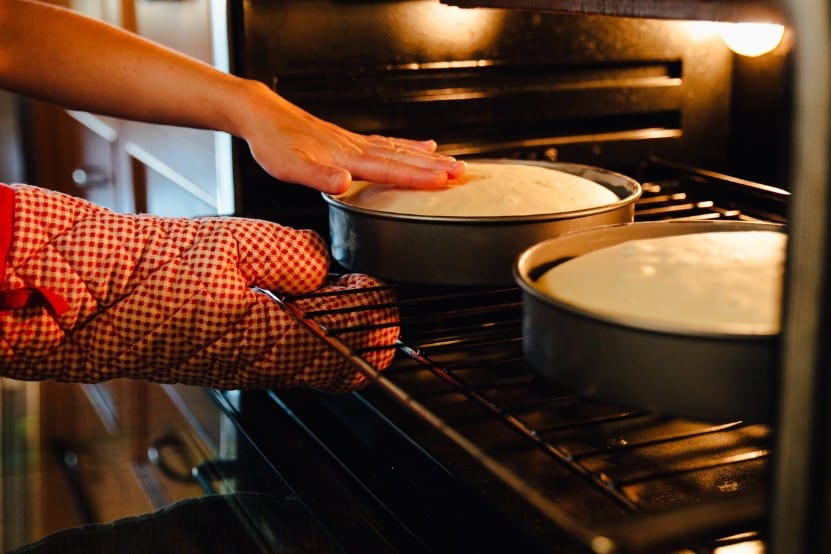
Weighing
In baking, accuracy has always been paramount. What can be more accurate than weighing each ingredient before proceeding with whatever process is next? Weighing ingredients in metric systems can make it a lot easier for you to find baking pans that can be swapped for each other.
Specialty pans and batters
Swapping pans is not always the way to go. Some batters are specially crafted for specialty pans. Bundt cakes, angel food cakes, and cheesecakes are usually exempt from the rule for swapping pans. Most of the time, their batters are specially crafted to accommodate specific types of pans.
Follow your senses
Perhaps you have grown to be a seasoned baker, and you have a lot of experience in the past. If so, you would have learned a lot of tips and tricks to help you adjust minor things in the recipe.
Tips In Baking
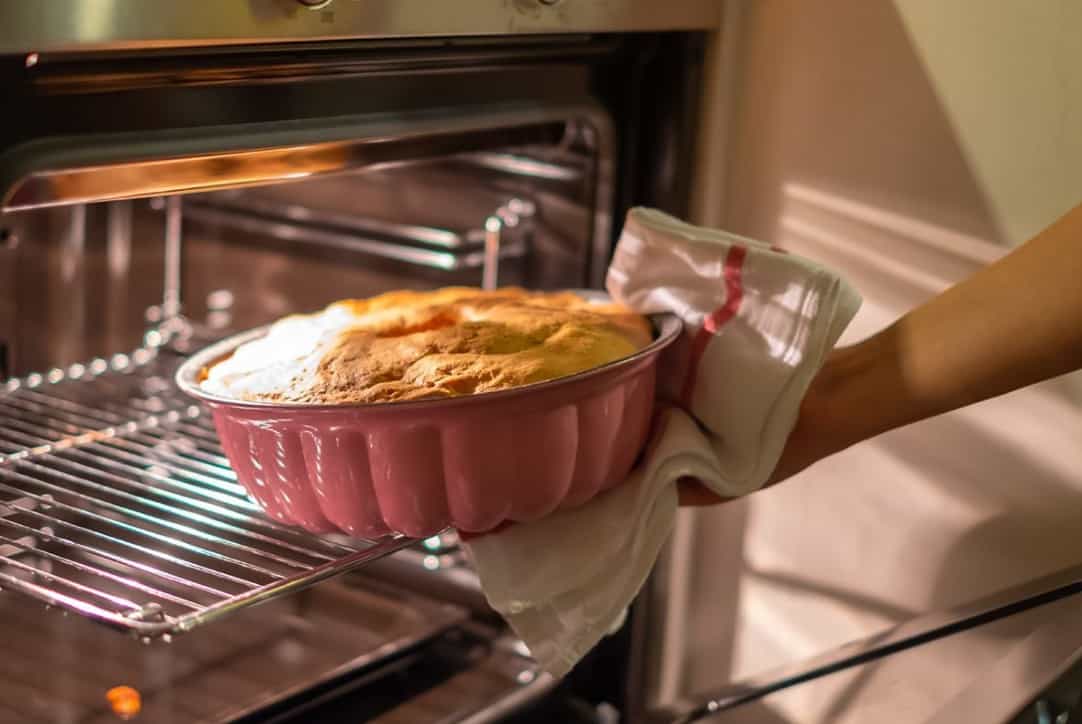
Invest in a measuring equipment
Measurements are very important in baking, so you must have your measuring equipment ready. These things are also one of the critical factors in adjusting recipes. Measuring equipment is not limited to measuring cups and measuring spoons, and there are many helpful things available in the market.
Most measuring tools come in sets. If you want to make your baking life easier and more effective, it would be wise to invest in these things. Make sure you invest in good-quality measurement tools.
Always sift
Sifting is an integral part of the baking process. All dry ingredients should be sifted before mixing them. Recipes may not indicate the need to filter, but you are encouraged to do so. Sifting allows for air, easier mixing, and can make the ingredients lighter.
Follow the recipe closely
While there are times when adjustments are deemed necessary, it’s essential to stick to the recipe as much as possible. Recipes may list alternatives if something from the list is unavailable or if you are missing a piece of equipment. Follow through the recipe as much as you can.
Summary
Adjusting time and temperature based on different pan sizes is crucial in baking. However, it’s pretty unlikely to have all available pan sizes out there in the market. These situations call for knowledge on how to adjust baking time for different size pans. This way, you can bake with the pan size you have at home.
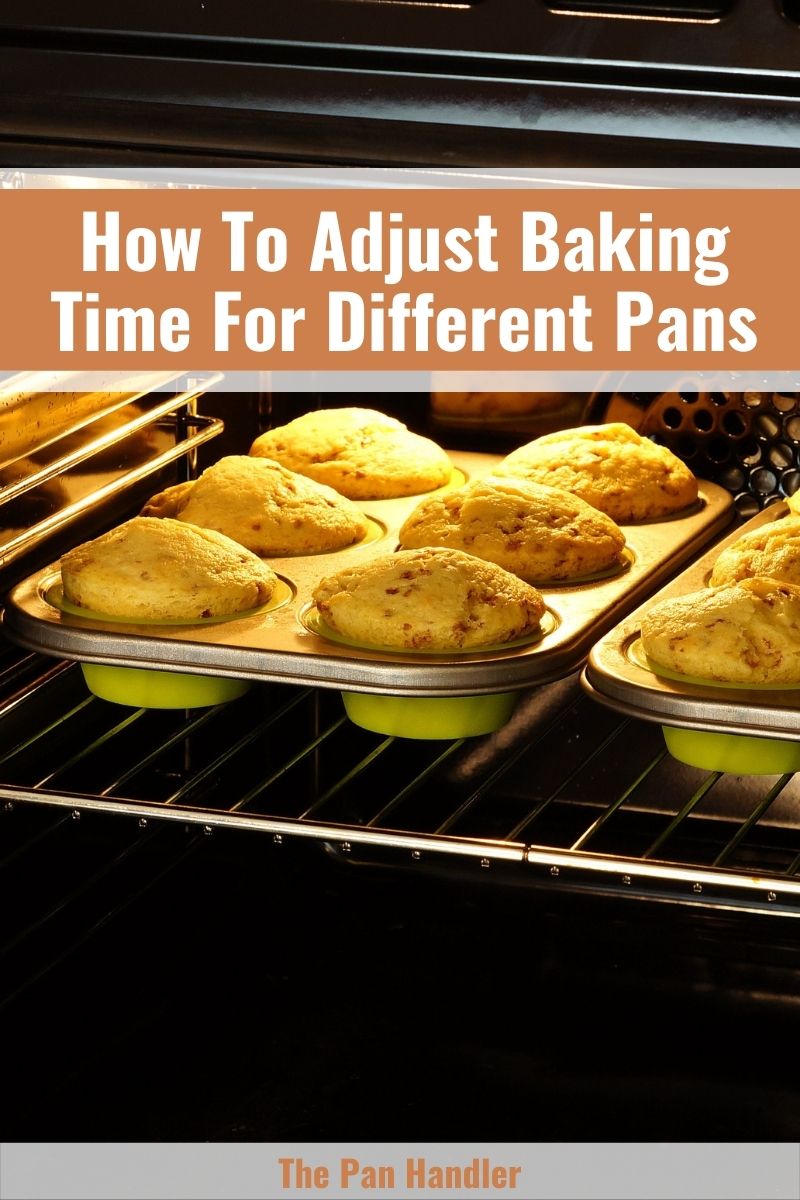

Michael Johnson is the founder of Pan Mastery, Inspired by his blacksmith grandfather’s legacy has a deep appreciation for hand-crafted pots and pans, he provides invaluable guides, reviews, and recipes to enhance your culinary journey.

